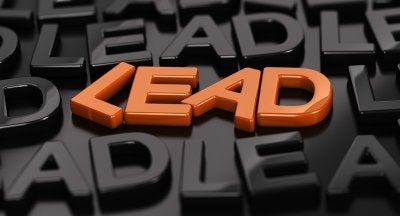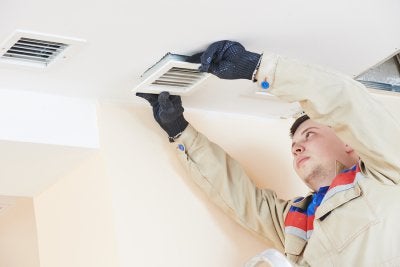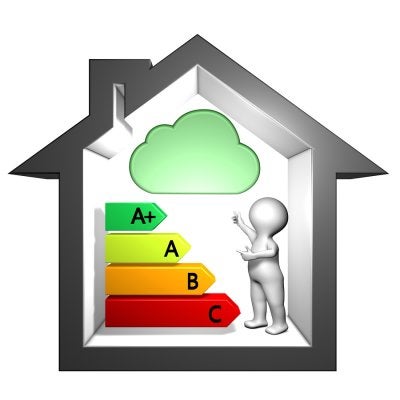-
The Dangers of Lead Paint
The U.S. Product Safety Commission banned the use of lead-based paint in houses and public buildings in 1977. Unfortunately, there were no such rules or regulations that required homes and buildings that already contained lead-based paint to receive any type of abatement. That’s why it’s important for anyone who lives or works in a building that dates prior to 1977 schedule lead-based paint testing. Watch this video to learn more about the dangers of lead paint, testing for lead-based paints, and why you need to hire a certified lead abatement professional to remove any lead substances found in your home or business.
If you’re at all concerned about lead exposure in your home or business, contact an environmental testing company in San Francisco and schedule a lead inspection as soon as possible. Lead testing will reveal the presence of this deadly metal in your home or business, at which time you can seek out lead abatement to protect your family or your employees and customers. For immediate residential or commercial lead testing in the Bay Area , call Safe Air Fast at (916) 459-1069.
-
Looking Back at the History of Lead
Although lead has been remarkably important in the rise of modern civilization and society, it’s also an insidiously toxic metal that has caused untold sickness and death as long as it’s been used. The dangers of lead poisoning are well documented today, but concerns with lead-based paint and other lead-containing products continue to drive businesses and homeowners to perform lead testing and seek lead abatement services in San Francisco. But how lead come to pose such a risk to modern society? Consider this brief history of lead to find out.
Early Romans and the Dangers of Lead

Lead played a major role in the building of the great Roman Empire, including the vast network of piping that kept Rom and the provincial cities of the Empire supplied with water. However, lead also played a role in the downfall of Rome. The Romans were aware that lead could cause serious health problems, and yet they equated limited exposure with limited risk. What they didn’t realize, as the world would discover in the 20 th century, is that everyday low-level exposure to the metal rendered them vulnerable to chronic lead poisoning.The U.S. Leads the World in Lead Consumption
Fast forward a few thousand years and the U.S. emerges as the world’s leading producer and consumer of refined lead. According to reports, by 1980 the United States was consuming approximately 1.3 million tons of lead per year, which represented roughly 40 percent of the world’s supply. Refined lead was used heavily in the automotive industry, and also as a paint additive. That’s why many homes and buildings that date back before 1980 are at a high risk of containing lead-based paint and other lead-containing materials.Lead Protection Measures
As the science and medical communities made the public more aware of the dangers of lead exposure, the U.S. government finally took action to protect its citizens. In 1977, the U.S. Consumer Product Safety Commissions banned lead paint in residential properties and public buildings, along with toys and furniture containing lead paint. Homes or buildings built before the ban took effect should be tested for lead-based paint by an environmental safety testing company in San Francisco. -
Spotlight on Environmental Cleanup Testing
If an environmental test reveals that your home or business contains asbestos, lead, or mold, you will need to hire licensed abatement or remediation professionals to remove the threat. But after the cleanup service is complete, it’s important to get one more round of environmental testing to ensure that the remediation or abatement contractor was successful and that the threat was completely eliminated from your home or business. If post-cleanup asbestos testing , mold testing, or lead testing reveals that the contractor was unsuccessful, you will have more leverage in requesting that the contractor come back and retreat the affected area.
In San Francisco, Safe Air Fast is the environmental testing company you can count on for post-cleanup clearance testing. Safe Air Fast provides asbestos, lead, and mold testing services for homeowners and businesses throughout the Bay Area. Call (916) 459-1069 to schedule environmental testing with Safe Air Fast of San Francisco today.

-
How to Improve Your Indoor Air Quality
You take lots of different steps to protect your health and the health of your family, but did you know that one of the biggest health threats might be the air inside of your home? According to the EPA, the average indoor environment is up to five times more toxic than outside air, and in some cases indoor air pollution has been found to be 100 times worse. Fortunately, there are some simple steps you can take to improve the air quality inside your home and protect your family from the negative health effects of indoor air pollution.
Get Your Home Tested

First and foremost, you should know just how bad the air quality is inside your home. Air testing services in San Francisco can test your indoor air quality so you know exactly what type of contaminants and pollutants you need to eliminate or get under control. Testing services can also detect the presence of dangerous particles such as mold, asbestos, and lead.Ensure Proper Ventilation
One of the best things you can to do in order to improve your home’s indoor air quality is ensure that your home is properly ventilated . For example, make sure that all fuel-burning appliances are vented to the outside well away from windows and HVAC intakes to eliminate breathing in toxic combustion fumes. When weather permits, open doors and windows to air out your home with fresh air.Minimize Chemical Pollutants
Some of the leading contributors of indoor air pollution are the chemicals people use every day. To improve the air quality inside your home, minimize the use of harsh cleaning chemicals and most all aerosol sprays. You should also look for low-emitting products that have been certified and labeled by reputable organizations such as Green Seal. Manufacturer claims of “no VOC” or “eco-friendly” should be inspected and verified before you use said product in your home.
RECENT POSTS
categories
- Uncategorized
- Lead
- Mold
- San Francisco Mold & Asbestos Removal
- Indoor Air Pollution
- Mold Remediation
- Asbestos
- Safe Air Fast
- Mold Inspection
- Remediation
- Bacteria Testing
- Asbestos Testing
- Abatement
- Lead Testing
- Sewer Line
- Lead Survey
- Mold Testing
- Air Quality Inspection
- Home renovations
- Allergies
- Renovation Contractor
- Infographic
- lead paint
- Air Quality
- Air Quality Test
- Mold removal
